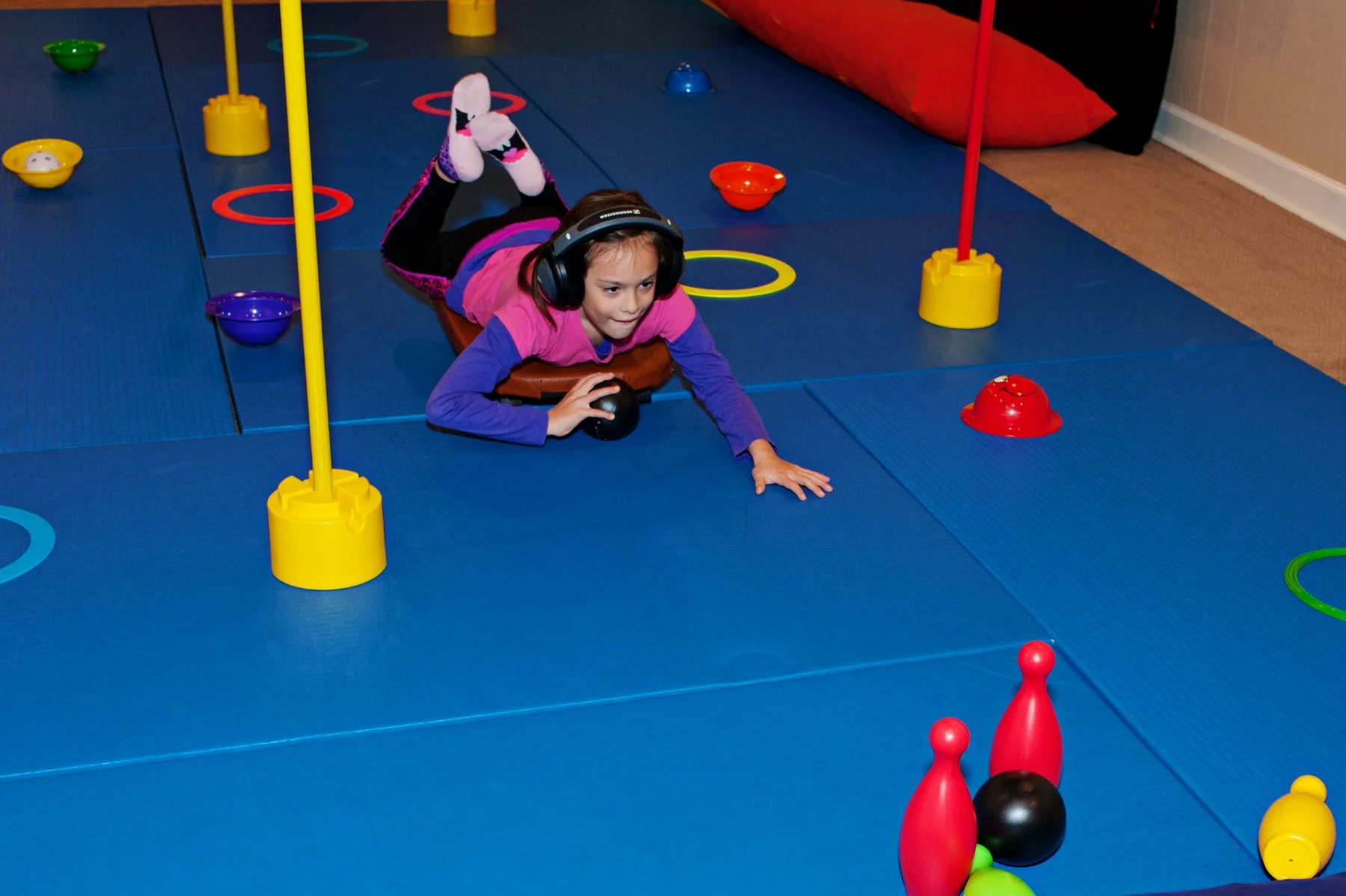






Intro
“Play is often talked about as if it were a relief from serious learning. But for children, play is serious learning. Play is really the work of childhood.”
— FRED ROGERS
Intro
“Play is often talked about as if it were a relief from serious learning. But for children, play is serious learning. Play is really the work of childhood.”
— FRED ROGERS
Play is a powerful tool.
Adults often discount the importance of play for a child. But in fact, play is profound for a child’s growth, crucial to their creativity and builds the foundation for a lifetime of learning.
Play is key to neurological development and is an essential way that children build socially resilient and cognitively flexible brains.
One of PLAYmatters most important roles is building a supportive relationship with a child. By encouraging a child to open up through the language of play, we can assess a child’s situation by observing how they interact and engage in play activities.

Benefits of Play
Benefits of Play
THE IMPORTANCE OF PLAY
The benefits of play are immense.
All of the domains of a child’s development – cognitive, social, emotional, and physical – are unified through play.
Playing is how kids learn about the world and their place in it. It’s the natural language of children, even before they’ve mastered verbal communications — and sets the stage for future learning and success from the classroom to the workplace.
It aids in a children’s ability to interact, negotiate, and compromise with others.
It’s where kids play out scenarios that can happen in real life and where they learn and practice strategies to cope with fear, anger, and frustration.
Free play is the main way children learn to control themselves, get along with peers, and become emotionally resilient. Even simple play like block building, drawing, running, and jumping all contribute to the development of fine and gross motor skills.

Importance of Sensory Integration
Importance of Sensory Integration
THE IMPORTANCE OF SENSORY INTEGRATION
If playing is the bridge to a child learning, sensory integration is the foundation upon which everything is built.
A child’s ability to pay attention and learn is largely built on the ability to integrate and organize information from all their senses.
All children interpret sensory input differently. What is stimulating to one child might be overwhelming to another. PlayMatters can help determine if sensory processing impairments may be an underlying cause of a child’s learning or attention deficit.

DIR FloorTime
DIR FloorTime
ABOUT DIR FLOORTIME
In addition to Sensory Integration, PLAYmatters utilizes and puts into practice (when appropriate) DIR Floortime. DIR Floortime is a systematic approach to working with a child to help him or her climb the developmental ladder.
Like the developmental milestones created for motor skills and language skills, Floortime creates milestones for important social and emotional development. Milestones like self control. Relating to and communicating with others. Problem solving and abstract thinking.
Floortime treats the social, emotional, and cognitive landscape of the child holistically. It’s a child-centered approach that emphasizes each child’s unique interests and follows their lead. It builds on those interests with the aim of developing more and more complex actions and interactions over time.

The Senses
The Senses
SENSORY INTEGRATION
Everyone knows the five basic senses; seeing, hearing, taste, smell and touch. But there are two less familiar senses that play a huge role in healthy child development; vestibular and proprioception.
The senses are distinctive tools in helping perceive the world. But they also work closely together to help a child’s brain to better process and understand the environment around them. Sensory play is a crucial part of healthy brain development. When a child is playing, they are exploring and learning through their senses.
Our sense of balance and motion (our vestibular system), and our sense of body awareness (proprioception) are essential to processing the world around us. In fact, our sense of balance is the first sensory system to fully develop and actually begins to form in the womb.
These two senses (vestibular and proprioception) — along with our sense of touch (or tactile system) are the fundamental building blocks for learning.
Behavior, appropriate or inappropriate, builds upon the sensory systems. If a child can’t control their body, they will try to control the environment around them — resulting in inappropriate or maladaptive behavior.
Learning and academic performance complete the picture. An easy way to think about it is that sensory integration affects and influences behavior and behavior affects and influences the ability of a child to actively engage and learn.
THE SENSES
Sense of Motion
VESTIBULAR
As a child develops, the sense of motion helps them to navigate and engage with their environment. The vestibular system is always active telling us where we are in space. Depending on the type of motion and the individual child, vestibular input can produce different responses: calming, organizing, alerting or disorganizing. It is a very complex and powerful system requiring OT intervention from an experienced clinician.
Sense of Body Awareness
PROPRIOCEPTION
Proprioception is a sense we all take for granted and yet use everyday. It is the input we receive from our muscles any time we push or pull and any time the joints are compressed together or stretched apart. For children this means heavy work (play) and deep pressure (hugs and squeezes). This type of input can be calming and relaxing. Like our sense of motion, this sense provides kids with important information that they need to be successful in all types of motor activities.
Sense of Touch
TACTILE
A child’s sense of touch helps a child do everything from buttoning a shirt without looking to giving and receiving hugs from a parent. The system has two main functions: sensation and discrimination. When the tactile sense does not process information correctly or is not well integrated with the other sensory systems, it can cause discomfort and difficulty in engaging in even simple daily tasks.
Sense of Sight
VISUAL
Vision is more than just being able to see clearly (acuity), but also how we see objects in the environment (perception). Our visual system helps us see what we need to see and filter out what we don't, which is an important part of being able to run and jump or even simply reach for an object.
Sense of Hearing
AUDITORY
Your auditory sense is your ears ability to sense or perceive sounds. Our brain must discern what sounds are important and which are not and from where the sounds originate. Difficulties in auditory processing may affect a child's interaction with the environment.
Sense of Taste
GUSTATORY
Your sense of taste is your taste buds ability to detect the taste of different flavors. The five basic tastes are sweet, bitter, sour salty and savory. Infants during play often mouth objects to learn more about their environment.

Grey Matters
Grey Matters
GREY MATTERS, TOO.
There is hard science behind what we do.
As developmental specialists, PlayMatters is a sensory integration and processing occupational therapy clinic with certified clinicians.
We’re “science-based and research-driven” meaning we utilize the latest evidence-based, leading-edge research and technologies — like auditory intervention such as Integrated Listening Systems.
PLAYmatters actively participates in new research assessments across the country to test new promising methods. The more we learn about the brain and cognitive functioning, the more we are able to help children reach their individual potential.
We firmly believe we’re changing the way the brain processes. We’re building new neural pathways — giving the brain what it needs to grow and literally changing the way your child thinks, creates and relates.






